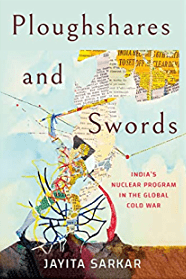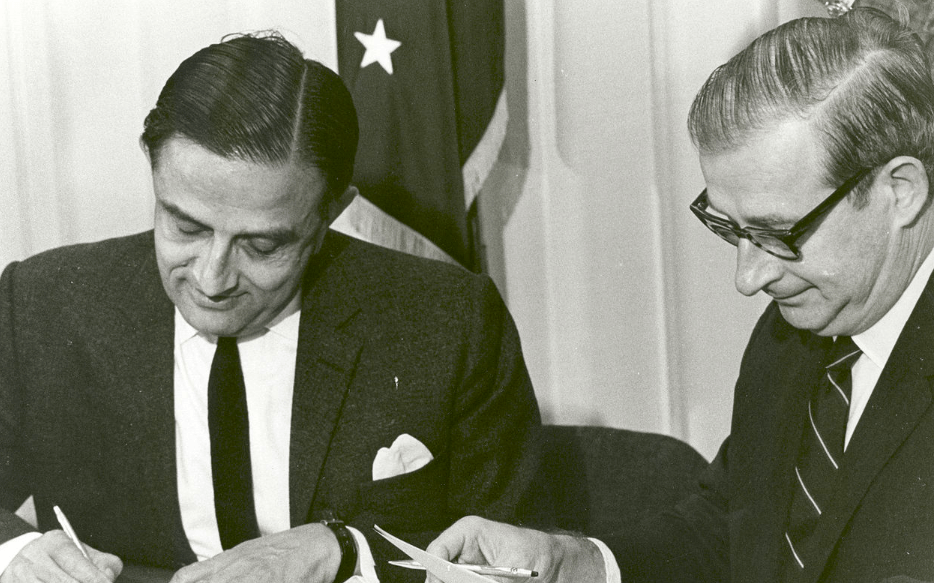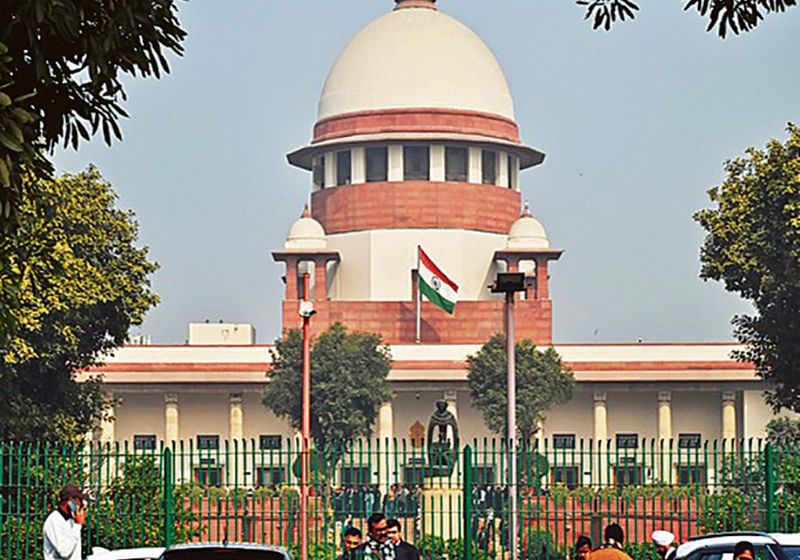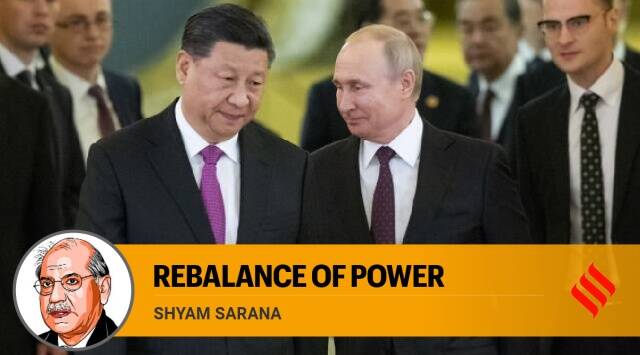Piecing Together the History of India's Nuclear Journey
THE WIRE
APLN member Rakesh Sood reviews “Ploughshares and Swords” by Jayita Sarkar. He points out that every nuclear weapon state pursued the nuclear project to make a weapon. India remains the only one that had a civilian focused programme but didn’t give up its right to its nuclear option. It was not an either/or option and makes it unique. Read the original articleh here.
 India’s nuclear programme has received a fair amount of scholarship in the last two decades. Yet, the majority of it suffers from a common weakness – the attempt to fit it into a Western narrative, perhaps to make it more easily understandable to Western audiences or even to Indian scholars who are reared on a diet of western IR theories. A key reason is that there is little written by the central actors themselves, the dilemmas and challenges they faced, as well as the economic and political compulsions under which they had to address the challenges and resolve the dilemmas.
India’s nuclear programme has received a fair amount of scholarship in the last two decades. Yet, the majority of it suffers from a common weakness – the attempt to fit it into a Western narrative, perhaps to make it more easily understandable to Western audiences or even to Indian scholars who are reared on a diet of western IR theories. A key reason is that there is little written by the central actors themselves, the dilemmas and challenges they faced, as well as the economic and political compulsions under which they had to address the challenges and resolve the dilemmas.
Jayita Sarkar’s Ploughshares and Swords is a welcome addition that mines a rich seam of information, especially the linkages between the nuclear and space programmes during the late 1960s and early 1970s, not hitherto explored, though it also suffers from the same weakness when it seeks to impose a structural framework on the sequence of events.
The title – Ploughshares and Swords – is a good window into Sarkar’s approach by emphasising the dual use character of both nuclear and space technologies. However, this duality dilemma was not new for the Indian scientists. Indian scientists like Homi Bhabha, Shanti Swarup Bhatnagar, K.S. Krishnan and Vikram Sarabhai had studied abroad and rubbed shoulders with the global scientific elite.
In fact, it was present even for the scientists involved with the Manhattan project. The destructive character of the nuclear weapons coupled with the seductive promise of understanding the nature and structure of the world was apparent to the scientists as they wrestled with their political choices, determined in no small manner by how close they remained to Los Alamos and the corridors of power.
The secrecy surrounding the Manhattan project also led to the first betrayals. In the early 1940s, the Union of Soviet Socialist Republics (USSR) was a US ally and partner. Yet, ideological rivalries prevented sharing of information. Klaus Fuchs was an unlikely spy. A German refugee who fled to the UK and then to the US passed on key design elements of the Fat Man (the implosion type plutonium device dropped over Nagasaki) because he felt that the US and the UK were treating their ally unfairly. There were others too – Ethel and Julius Rosenberg, Ted Hall, David Greenglass, Morris Cohen, and their inputs helped the Soviet programme catch up with the US in both the fission and fusion devices. As they stated during their trials, their betrayal was not for financial reasons; it was their way of resolving the nuclear dilemma in their moral universe. Ideological rivalry was not the only driving force.
Controlling access to nuclear science and technology became a key US objective and in 1946, the US passed the Atomic Energy (McMohan) Act restricting access to nuclear information and handing over security at nuclear facilities to the FBI. Even the British scientists found themselves excluded. They proceeded to set up their own nuclear reactor and reprocessing unit to produce plutonium. Since the US test site was unavailable and Canada was seen as too risky, the islands in northwest Australia was the site chosen for their first test in 1952.
Yet, the US also came up with the Atoms for Peace initiative in 1953 where the dilemma was sought to be resolved by transforming this threat to mankind by turning it into a beneficial technology, accessible to all. In 1957, this initiative led to the establishment of the International Atomic Energy Agency, as a vehicle to promote international cooperation for peaceful applications of nuclear science and technology. It took a decade when its role was transformed into becoming the verification arm of the nuclear Non-Proliferation Treaty (NPT).
While political leaders enjoy agency, it is always constrained, partly by domestic politics and partly by prevailing global events and tides. It is therefore difficult to look at specific decisions and label them as examples of ‘ploughshares’ or ‘swords’ and analyse personalities accordingly. Prime Minister Jawaharlal Nehru refrained from openly going down the weapons route but strongly supported the creation of the infrastructure that eventually made it possible. Prime Minister Indira Gandhi undertook an underground test in 1974 but remained content with describing it as a Peaceful Nuclear Explosion (PNE). Yet, in public perception, the two are seen very differently. This is what makes the Indian nuclear story so different and unique.
Attempts to fit decisions into categories – “the leaders of the nuclear program saw in nuclear fission the possibility to augment geopolitical goals of the territorial state as well as the technopolitical goals of the developmentalist state, leading to a larger dual-use enterprise simultaneously serving military and civilian ends,” are inherently problematic and always ex-post facto. It can enable Sarkar to question which decisions are ‘ploughshares’ and which decisions are ‘swords’; the question is merely rhetorical because reality seldom comes in black and white, mostly it is in shades of grey. To describe the struggles of India’s nuclear and space programmes as ‘an embodiment of the notion of a revisionist post-colonial modernity through a “logic of self-differentiation” and improvisation’ (Sarkar quoting Sudipta Kaviraj) only sounds glib.
The strength of Sarkar’s book lies in exploring the diplomacy undertaken by India with the US, France and the USSR during the 1950s and 1960s, before the two nuclear superpowers found common cause in promoting the goal of non-proliferation. The close links between the scientists and diplomats as they engaged with their counterparts in Washington, Moscow, Paris and Geneva is a lesson that was lost sight of in following decades and only got revived after 1998. During the 1970s and 1980s as the Cold War came to India’s doorstep, first with the 1971 crisis that led to the creation of Bangladesh and the war with Pakistan and then the 1979 Soviet intervention in Afghanistan, the gap between diplomatic rhetoric and national security interests grew. This is an issue that deserves greater academic scrutiny.
The linkages between the nascent space programme and the Department of Atomic Energy have never been written about in such detail. Sarkar also dispels the idea that Sarabhai was not as supportive of an underground test explosion as his predecessor Bhabha had been. The impact of the Chinese nuclear test in 1964, both in India and in the US, and its impact on nuclear diplomacy, provides political insights without the distraction of frameworks.
There are interesting questions that remains unexplored – if India’s plutonium reprocessing had begun in 1964, why did India not test before 1967 given that India was an active participant in the negotiations in Geneva on the NPT where the date of January 1, 1967 was being presented as the NPT’s cut-off date between the nuclear-weapon-states and the non-nuclear-weapon-states? Given that Indian scientists and diplomats had foreseen the political ramifications of safeguards and opposed it, why did the thought of testing not get explored? Were the limitations technical or political, or both?
Another interesting question that could do with more study is Indira Gandhi’s decision to test in 1974. Sarkar does well to dispel the myth that the decision was a distraction from her domestic political troubles, by pointing out that the decision was taken in 1972 when she enjoyed peak popularity. What is not adequately explored is the decision to call it a PNE. In hindsight, it is clear that it only kept India in limbo, safeguarding its nuclear option. Though this is also something that makes India’s nuclear odyssey sui-generis.
This bridge was crossed in 1998 when two announcements were made, one relating to having conducted the nuclear weapon tests and the second that India was a nuclear-weapon-state.
The Indian nuclear jigsaw puzzle is still incomplete but Sarkar has successfully added many small and necessary pieces to provide greater content and give it greater shape.
Image: Vikram A. Sarabhai (left), chairman of ISRO, and NASA administrator Thomas Paine sign an agreement in September 1969. Photo: NASA




